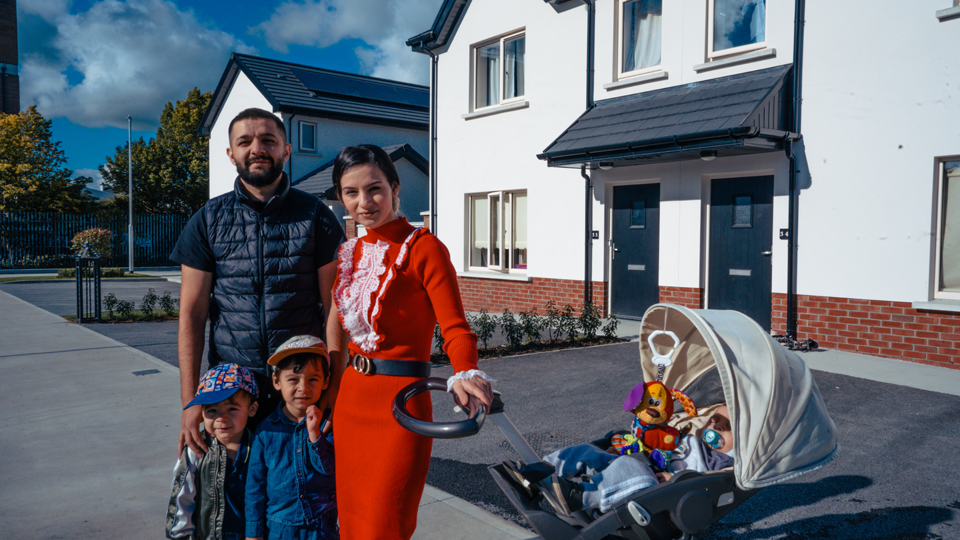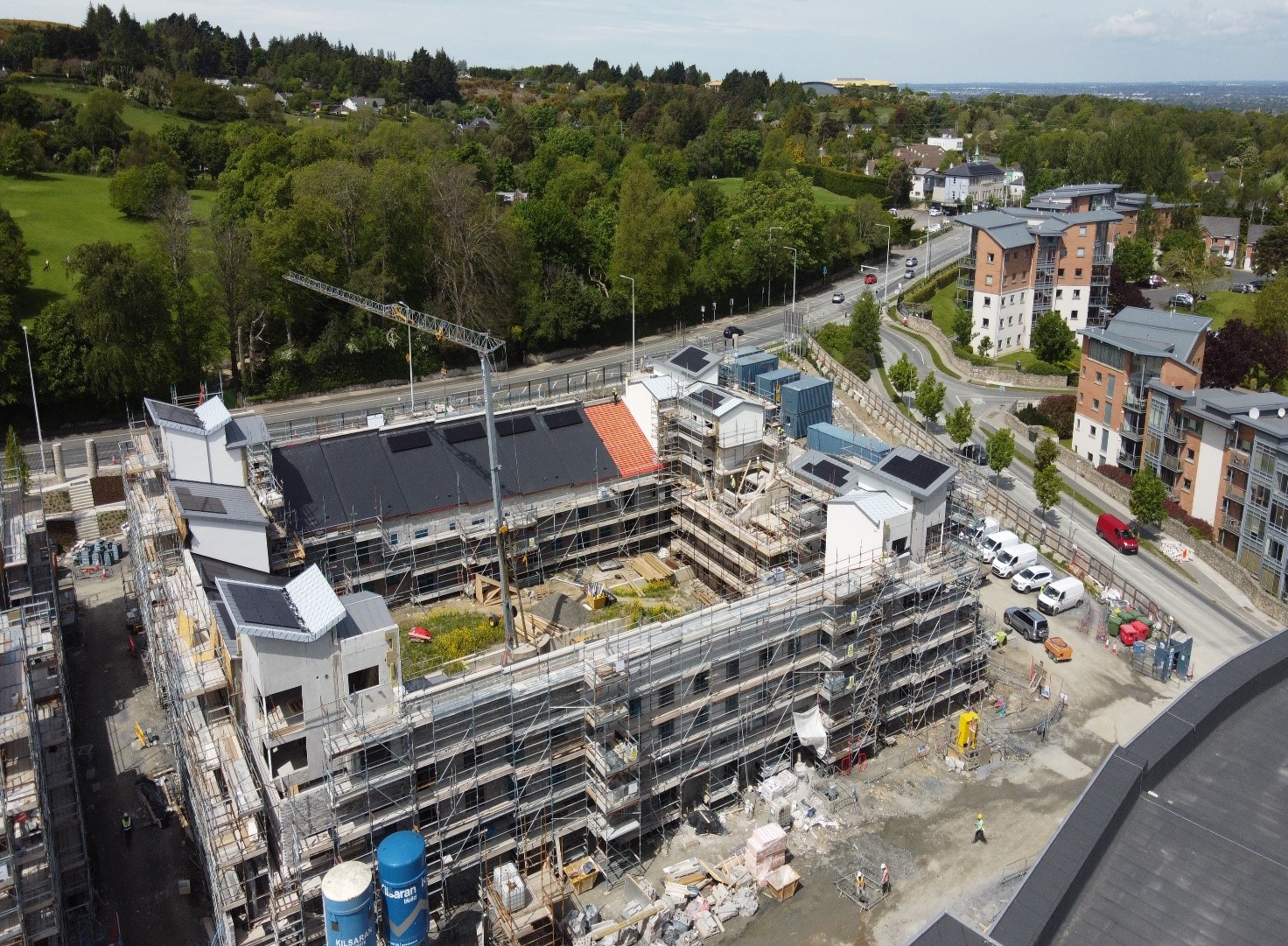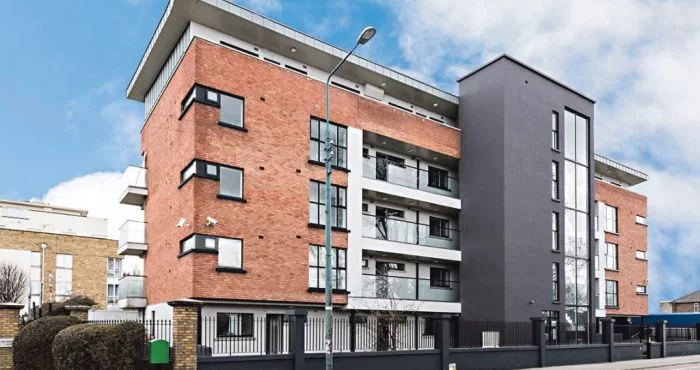The Irish Council for Social Housing (ICSH) is the national representative federation for approved housing bodies (AHBs*) in Ireland. The ICSH Federation comprises a range of members with differing capacity, ambitions, and expertise; each playing their part in meeting housing need. ICSH members deliver housing locally and nationally, as well as providing services that support individuals’ capacity to enjoy their right to full participation in the areas of education, health, employment, social integration and inclusion, housing rights and the environment.

As part of the collective AHB sector, ICSH members provide and manage general needs social and affordable cost rental housing for households. This is complemented by members that provide and manage key housing and supports to special need groups such as those experiencing homelessness, older people, disabled people, refugees, and households with mortgage difficulties.

How do AHBs Deliver Social Housing?
Approved housing body (AHB) social housing is provided via a range of delivery streams, which are part funded through state capital and current expenditure. These delivery streams can be identified according to three broad categories: build, acquisition and leasing. The AHB sector provided 4,949 social and cost rental homes in 2022, 44% of all long-term social housing in 2022 and 69% of all cost rental housing, with 470 cost rental homes. 85% of AHB social housing delivery in 2022 were new build homes, with the remaining 15% divided between acquisition and leasing. Broadly speaking these three categories can be described as follows:
Build
The AHB build programme consist of both new homes directly built by AHBs as well as the purchase of newly built ‘turnkey’ homes, advance agreements with developers for new build on developer sites and those purchased through the Part V mechanism. The AHB new build programme is funded through the Capital Advance Leasing Facility (CALF), the Capital Assistance Scheme (CAS), the Cost Rental Equity Loan (CREL) and the Social Housing Current Expenditure Programme (SHCEP). SHCEP funds the ongoing (current) costs of homes delivered by approved housing bodies through build (except for cost rental homes). In the case of homes built through the CALF and CREL schemes, at least 70% of capital funding comes from private sources, banks or the Housing Finance Agency (HFA).

Acquisition
AHBs purchase homes from the private second-hand market to deliver social housing. The AHB acquisition programme is funded through the Capital Advance Leasing Facility (CALF), the Capital Assistance Scheme (CAS), the Housing Agency Acquisitions (HAA) programme and the Social Housing Current Expenditure Programme (SHCEP). SHCEP funds the ongoing (current) costs of homes delivered by approved housing bodies through acquisition. In addition to homes delivered through the various leasing programmes, homes are usually acquired for a specific purpose, such as prevention of homelessness if a landlord is selling up. They could also, for example, be acquired as a group home for disabled people that is close to healthcare settings and amenities.
Leasing
AHBs enter into leasing agreements with developers and property owners that are funded through the Social Housing Current Expenditure programme (SHCEP). SHCEP funds the ongoing (current) costs of homes delivered by approved housing bodies through the various leasing programmes. These are short-term (0-10 years) or long-term (typically 10-20 years) leases. Most AHB standard social leasing arrangements are long-term. Other sources of leased homes (funded through SHCEP) include the National Asset Residential Property Services or NARPS (a NAMA SPV), unsold affordables (USAs) managed on behalf of local authorities, the AHB Repair & Lease programme and AHB Mortgage to Rent (MTR) homes.

AHB Procurement Models
- AHB Design & Build on an AHB site (Direct Build Social Housing)
- Developer Design & Build on an AHB site (Direct Build Social Housing)
- Acquisition Turnkeys (Client-Led New Build Social Housing)
- New Build Development Agreements (Client-Led New Build Social Housing)
- Part V (Client-Led New Build Social Housing)
- Acquisition
- Leasing
- Cost Rental
Direct Build Social Housing
AHB Design & Build: An AHB may have an interest in the development land (such as a donation) or may have purchased the land. The housing project is developed through the AHB’s own in-house design and build teams, and many of the larger AHBs have registered architects, quantity surveyors, planners, clerks of works, technicians and project managers. Through this model, an AHB assembles the design team and goes through design, development, planning, contractor recruitment and on-site works through to project completion.

Developer Design & Build: An AHB purchases a site (usually with planning permission) and enters into a procurement and development agreement with a developer. The developer is responsible for the design and construction of the project and it is funded by the AHB through payments made at different stages of the construction process.
Client-Led New Build Social Housing
Acquisition Turnkey: Newly built housing developed on private land can be acquired by AHBs through turnkey mechanisms for social housing. Acquisition turnkey housing is usually bought by AHBs on completion of a project.
New Build Development: AHBs enter into development agreements with developers (advance purchase agreements) for the delivery of homes on private sites for social housing. Often these agreements are formed in response to an EOI from the AHB setting out the locations and specifications for housing they require. In this category the homes are usually not yet under construction until the AHB enters the development agreement with the developer. This form of development comes under New Build Development Agreements.

Part V: Part V is a mechanism established by government which dictates that local authorities can obtain a minimum 10% (increasing to 20%) of land zoned for housing land or homes from a development at existing use value (or at cost of delivery in the case of finished homes) rather than at development value.
Social Housing Acquisition
AHBs purchase homes from the private second-hand market (which can include banks and investment companies) to deliver social housing. AHB social housing acquisitions can also include the remaining units (yet to be completed) in unfinished estates. Once the sale closes, an AHB may require a contractor to complete upgrade works before the units are ready for tenanting. Acquisitions can be multiple homes in a scheme, or one-off homes.

Social Housing Leasing
As outlined above, AHBs enter into leasing agreements with developers and property owners. Leases are short-term (0-10 years) or long-term (typically 10-20 years) leases. Most AHB standard social leasing arrangements are long-term. Other sources of leased homes include NARPS (Nama’s National Asset Residential Property Services), unsold affordables (USAs), the AHB Repair & Lease programme and AHB Mortgage to Rent (MTR) homes.
Cost Rental
Cost rental helps households with moderate incomes access affordable, secure tenancies in accommodation suitable to their needs. It is a model of delivery where the AHB supplies accommodation and charges rent at a level that is sufficient to cover both the capital costs and on-going management and maintenance expenses. Cost rental rents must be applied with a minimum market rent discount of 25%. The initial rent for any dwelling can increase by a maximum of the Harmonised Index of Consumer Prices (HICP). Applicants’ net household income must be below €66,000 per annum for Dublin and €59,000 for everywhere else in the country. AHBs must advertise new cost rental homes online for a minimum of seven days, during which period the landlord will accept applications from prospective tenants. Where the number of applications exceed the number of available homes, an independently-verifiable lottery/random selection is utilised to select applicants. Cost rental homes are currently being delivered as a group of dwellings (not less than 10) and must be new builds or commercial to residential retrofits that have not previously been used for residential purposes.
